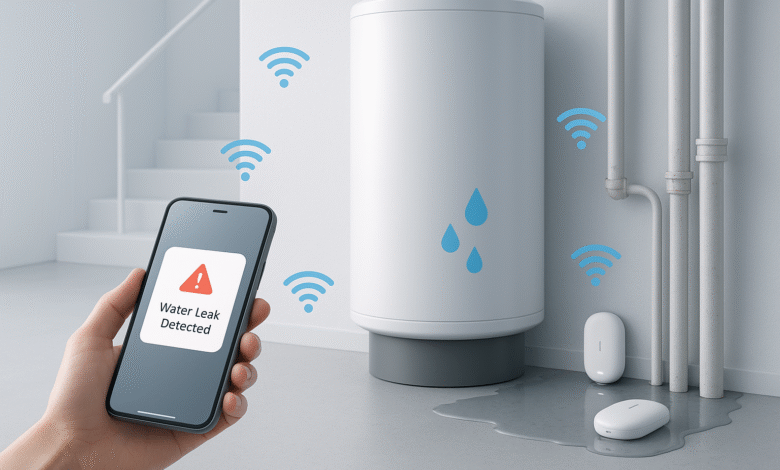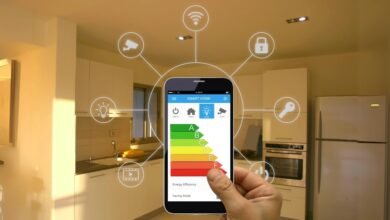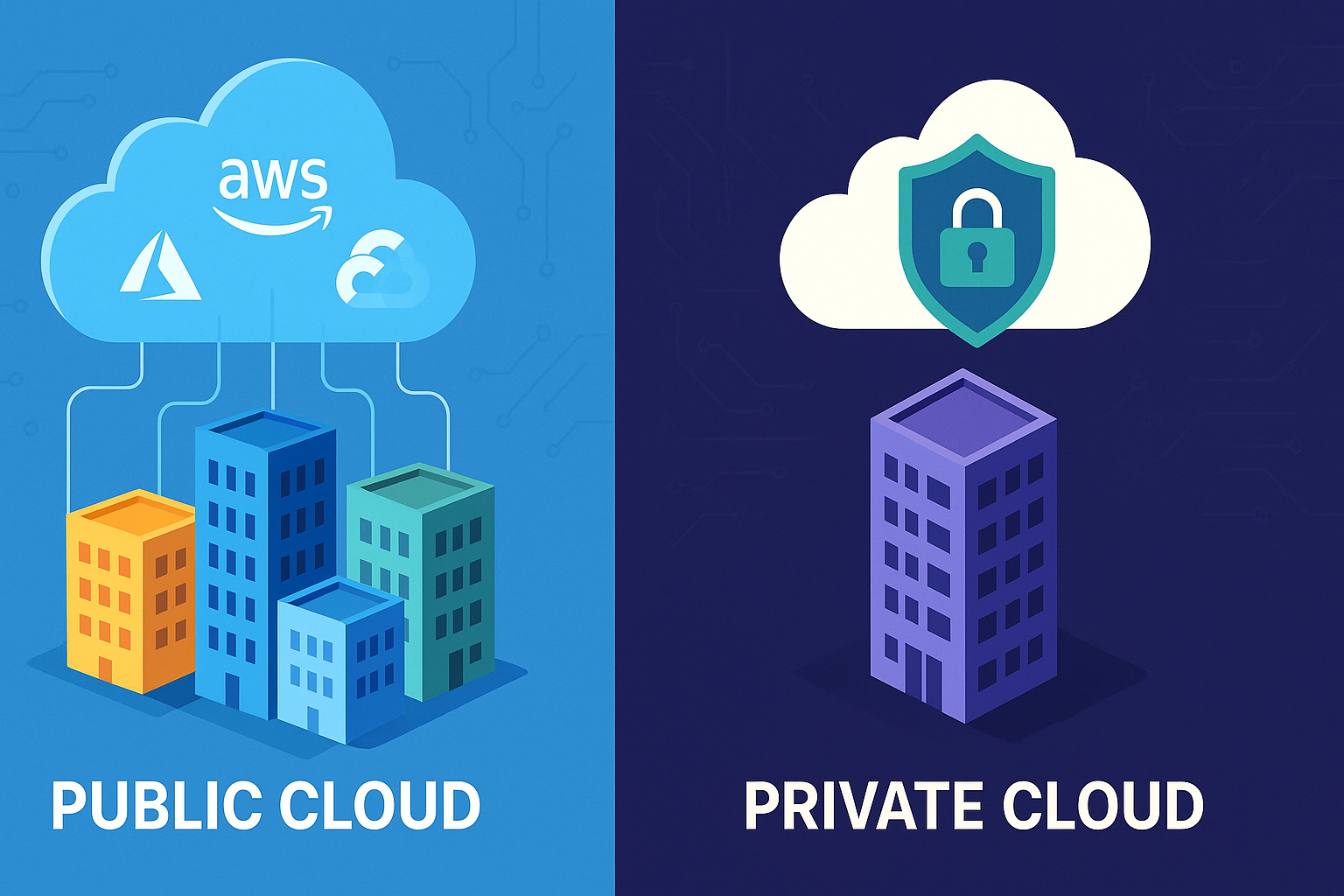Water Leak Detection: Preventing Property Damage with IoT
Protect your property with smart water leak detection systems. Learn how IoT technology prevents costly damage through early detection & real-time alerts.

Water damage ranks among the most costly and devastating problems property owners face today. From burst pipes flooding basements to slow leaks rotting away floor joists, undetected water issues can transform minor maintenance problems into major financial disasters. The good news? Modern water leak detection technology, powered by Internet of Things (IoT) devices, offers unprecedented protection for homes and businesses.
This comprehensive guide explores how smart leak detection systems work, their benefits, and why investing in these technologies could save you thousands of dollars in property damage.
Understanding Water Leak Detection Technology
Water leak detection has evolved dramatically from simple visual inspections to sophisticated automated monitoring systems. Traditional methods relied on homeowners spotting obvious signs like water stains, musty odors, or visible pooling. Unfortunately, by the time these symptoms appear, significant damage has often already occurred.
Modern leak detection systems use advanced sensors and smart technology to identify moisture problems before they become visible. These systems continuously monitor water levels, pressure changes, and humidity fluctuations throughout your property. When abnormal conditions are detected, they immediately alert property owners through smartphone apps, text messages, or email notifications.
The integration of IoT technology has revolutionized how we approach water damage prevention. Instead of reactive repairs after damage occurs, property owners can now take proactive measures to stop leaks before they cause extensive harm.
How Smart Water Sensors Work
Smart water leak detectors operate using several different sensing technologies. Most common devices use conductivity sensors that detect the presence of water by measuring electrical conductivity between metal contacts. When water bridges these contacts, the device triggers an alert.
More advanced systems employ rope sensors or cable sensors that can monitor large areas or long pipe runs. These sensors consist of specially designed cables that detect moisture along their entire length, making them ideal for basements, mechanical rooms, or areas with extensive plumbing.
Acoustic leak detection represents another cutting-edge approach. These sensors listen for the distinctive sounds that water leaks create, such as dripping or flowing water inside walls or underground pipes. By analyzing sound patterns, these devices can pinpoint leak locations with remarkable accuracy.
The Hidden Costs of Water Damage
Property damage from water leaks extends far beyond the immediate cleanup costs. The Insurance Information Institute reports that water damage and freezing account for nearly 24% of all homeowners insurance claims, with average claim amounts exceeding $11,000.
Hidden water leaks can cause structural damage that compromises your property’s foundation, framing, and load-bearing elements. Wood rot, metal corrosion, and concrete deterioration often occur gradually, making damage expensive to detect and repair. Additionally, moisture problems create ideal conditions for mold growth, which poses serious health risks and requires professional remediation.
Beyond structural concerns, water damage affects personal belongings, electronics, furniture, and irreplaceable items like photographs or documents. Insurance policies may not cover all losses, particularly if damage results from gradual leaks rather than sudden pipe bursts.
The indirect costs of water damage include temporary housing expenses, lost productivity from disrupted business operations, and increased utility bills from wasted water. Early detection through smart monitoring systems helps minimize these cascading financial impacts.
IoT Revolution in Property Protection
The Internet of Things has transformed water leak detection from reactive maintenance to predictive monitoring. IoT-enabled devices connect to your home’s Wi-Fi network, creating an intelligent ecosystem that monitors your property 24/7, even when you’re away.
These connected systems offer real-time monitoring capabilities that traditional methods simply cannot match. Sensors placed throughout your property continuously collect data about moisture levels, temperature, humidity, and water pressure. This information is processed using cloud-based analytics that can identify patterns and predict potential problems before they escalate.
Smart leak detection systems integrate seamlessly with existing home automation platforms like Amazon Alexa, Google Home, or Apple HomeKit. This integration allows for automated responses, such as shutting off main water supplies when major leaks are detected or adjusting HVAC systems to prevent condensation problems.
The data collected by IoT sensors provides valuable insights into your property’s water usage patterns. Property owners can identify inefficient appliances, detect minor leaks that waste water, and optimize their overall water consumption for cost savings and environmental benefits.
Types of Smart Leak Detection Systems
Point Sensors
Point sensors represent the most basic and affordable option for water leak detection. These compact devices are placed in specific locations where leaks commonly occur, such as near water heaters, washing machines, dishwashers, or sinks. When water contacts the sensor, it immediately sends alerts to your smartphone.
Point sensors work well for monitoring individual appliances or high-risk areas. They’re battery-powered, easy to install, and require no professional installation. However, their protection is limited to their immediate vicinity, so comprehensive coverage requires multiple units.
Whole-House Monitoring Systems
Whole-house leak detection systems monitor your property’s entire water supply through sensors installed on the main water line. These sophisticated systems track water flow, pressure, and usage patterns throughout your plumbing system.
When unusual water consumption is detected – such as continuous flow indicating a running toilet or major leak – the system can automatically shut off your home’s water supply to prevent damage. These systems provide the most comprehensive protection but require professional installation and higher upfront investment.
Hybrid Solutions
Hybrid systems combine point sensors with central monitoring capabilities. Multiple wireless sensors placed throughout your property communicate with a central hub that processes data and manages alerts. This approach offers broader coverage than point sensors while remaining more affordable than whole-house systems.
Many hybrid systems allow users to add sensors gradually, starting with high-risk areas and expanding coverage over time. This scalability makes them attractive for property owners who want comprehensive protection without massive initial investments.
Key Features to Look for in Leak Detection Devices
Real-Time Alerts and Notifications
Effective leak detection systems must provide immediate notifications when problems are detected. Look for devices that offer multiple alert methods, including smartphone push notifications, text messages, email alerts, and loud audible alarms for local notification.
The best systems allow customization of alert settings, enabling you to set different notification preferences for various family members or property managers. Some advanced systems can even contact professional emergency services or trusted contractors when major leaks are detected.
Battery Life and Power Management
Since many leak detection sensors operate on batteries, long battery life is crucial for reliable operation. Quality devices typically offer 1-3 years of battery life under normal conditions. Look for systems that provide low-battery warnings well in advance of power depletion.
Some sensors offer hybrid power options, using batteries for backup while connecting to wall power for primary operation. This redundancy ensures continuous monitoring even during power outages.
Integration Capabilities
Modern leak detection systems should integrate with popular smart home platforms and home security systems. This integration enables automated responses and provides centralized monitoring through existing home management apps.
Consider systems that offer open APIs or work with IFTTT (If This Then That) for custom automation scenarios. The ability to integrate with other smart home devices enhances overall functionality and value.
Water Shut-Off Capabilities
Advanced systems include automatic water shut-off features that can stop water flow when major leaks are detected. These motorized valves install on your main water line and can be controlled remotely through smartphone apps.
Automatic shut-off capability provides the ultimate protection against catastrophic water damage, especially when properties are unoccupied for extended periods. However, ensure systems include manual override options for emergency situations.
Installation and Setup Process
DIY Installation Options
Many point sensors and basic monitoring systems are designed for easy DIY installation. These devices typically require no tools or special skills – simply remove adhesive backing and place sensors in desired locations. Most connect to your Wi-Fi network through simple smartphone app setup processes.
DIY systems offer immediate cost savings and allow flexible placement of sensors. Property owners can easily relocate sensors, add new units, or modify coverage areas without professional service calls.
Professional Installation Benefits
Whole-house systems and advanced monitoring solutions typically require professional installation. Certified technicians ensure proper sensor placement, optimal system configuration, and integration with existing plumbing and electrical systems.
Professional installation often includes comprehensive property assessments to identify high-risk areas and recommend optimal sensor placement strategies. Many companies also provide ongoing maintenance and monitoring services for complete peace of mind.
System Configuration and Testing
Proper system configuration is crucial for effective leak detection. This includes setting appropriate sensitivity levels, configuring notification preferences, and establishing automated response protocols.
Regular testing ensures your system functions correctly when needed. Most systems include test modes that simulate leak conditions to verify sensor operation and alert delivery. Establish monthly or quarterly testing schedules to maintain system reliability.
Smart Home Integration Benefits
Modern leak detection systems integrate seamlessly with popular smart home ecosystems, creating powerful automation possibilities. When connected to platforms like SmartThings, Hubitat, or Control4, leak sensors can trigger complex response scenarios.
For example, when a leak is detected near your water heater, the system might automatically shut off power to the unit, close the main water valve, turn on emergency lighting, and send notifications to multiple family members. These automated responses minimize damage even when nobody is home to respond immediately.
Voice control integration allows convenient system monitoring and management. Ask Alexa about your leak detection system status, or use Google Assistant to arm or disarm specific sensors. This hands-free control is particularly valuable for elderly users or those with mobility challenges.
Smart home integration also enables sophisticated scheduling and scene management. Program your system to increase monitoring sensitivity when you’re away on vacation, or automatically disable basement sensors during scheduled maintenance activities.
Cost Analysis and ROI Considerations
Initial Investment Costs
Basic point sensors start around $30-50 per unit, making them accessible for most property owners. Comprehensive whole-house systems range from $500-2000, depending on property size and feature complexity. Professional installation adds $200-500 to overall costs.
While initial investments may seem substantial, consider them against potential water damage costs. A single significant leak can easily cause $5,000-15,000 in damage, making leak detection systems extremely cost-effective insurance policies.
Long-Term Savings
Beyond preventing major damage events, leak detection systems provide ongoing savings through improved water efficiency. By identifying minor leaks, running toilets, and inefficient appliances, property owners typically reduce water bills by 10-15%.
Insurance companies increasingly offer discounts for properties equipped with professional leak detection systems. These discounts, typically 5-15% of annual premiums, help offset system costs over time.
Property Value Enhancement
Installing professional leak detection systems increases property values and marketability. Home buyers increasingly expect smart home features, and leak detection represents practical protection that appeals to security-conscious purchasers.
Properties with comprehensive leak detection systems often sell faster and command premium prices compared to similar homes without these protections.
Maintenance and Troubleshooting
Regular Maintenance Requirements
Leak detection systems require minimal ongoing maintenance, but regular attention ensures optimal performance. Check battery levels monthly, clean sensors quarterly, and test system functionality regularly.
Replace batteries proactively rather than waiting for low-battery warnings. Keep spare batteries on hand, particularly for systems with multiple sensors. Document battery replacement dates to establish replacement schedules.
Common Issues and Solutions
False alarms represent the most common leak detection system complaint. These typically result from high humidity, condensation, or sensor placement near heat sources. Adjust sensor locations or sensitivity settings to minimize false positives.
Connectivity issues may occur with Wi-Fi-dependent systems. Ensure adequate signal strength in sensor locations, and consider Wi-Fi extenders for large properties or areas with poor coverage.
Regular firmware updates are essential for maintaining system security and functionality. Enable automatic updates when available, or check manufacturer websites monthly for new releases.
When to Call Professionals
While many maintenance tasks are DIY-friendly, certain situations require professional service. If multiple sensors fail simultaneously, suspect electrical or network infrastructure problems that need expert diagnosis.
Professional service is also recommended for whole-house system maintenance, sensor recalibration, and integration troubleshooting. Establish relationships with qualified service providers before problems occur for faster emergency response.
Future of Water Leak Detection Technology
Artificial Intelligence Integration
Next-generation leak detection systems increasingly incorporate artificial intelligence and machine learning capabilities. These systems learn your property’s normal water usage patterns and can detect subtle anomalies that might indicate developing problems.
AI-powered systems provide predictive maintenance alerts, warning property owners about aging pipes, failing appliances, or developing leaks before they cause damage. This proactive approach represents the future of property protection technology.
Advanced Sensor Technologies
Emerging sensor technologies promise even more sensitive and accurate leak detection capabilities. Fiber optic sensors can monitor vast areas with pinpoint accuracy, while advanced acoustic sensors can detect leaks inside walls without invasive installation procedures.
Wireless sensor networks are becoming more sophisticated, with mesh networking capabilities that ensure reliable communication even in challenging installation environments.
Integration with Smart City Infrastructure
Future leak detection systems may integrate with municipal water management systems, providing valuable data for infrastructure planning and water conservation efforts. This cooperation benefits both individual property owners and broader community sustainability goals.
Smart city integration could enable automatic utility shut-offs during major leak events, reducing system-wide pressure problems and minimizing widespread damage during infrastructure failures.
Conclusion
Water leak detection technology represents one of the most valuable investments property owners can make for protecting their assets. IoT-enabled smart systems provide 24/7 monitoring, immediate alerts, and automated responses that minimize damage from unexpected leaks.
The combination of affordability, ease of installation, and proven effectiveness makes modern leak detection systems essential components of comprehensive property protection strategies. As technology continues advancing, these systems will become even more sophisticated and valuable.
Don’t wait for water damage to strike your property. Investing in quality leak detection technology today could save thousands in repair costs tomorrow while providing invaluable peace of mind for you and your family.
Whether you choose simple point sensors for high-risk areas or comprehensive whole-house monitoring systems, taking proactive steps to detect water leaks early is one of the smartest decisions any property owner can make. Your property, your wallet, and your peace of mind will thank you.











